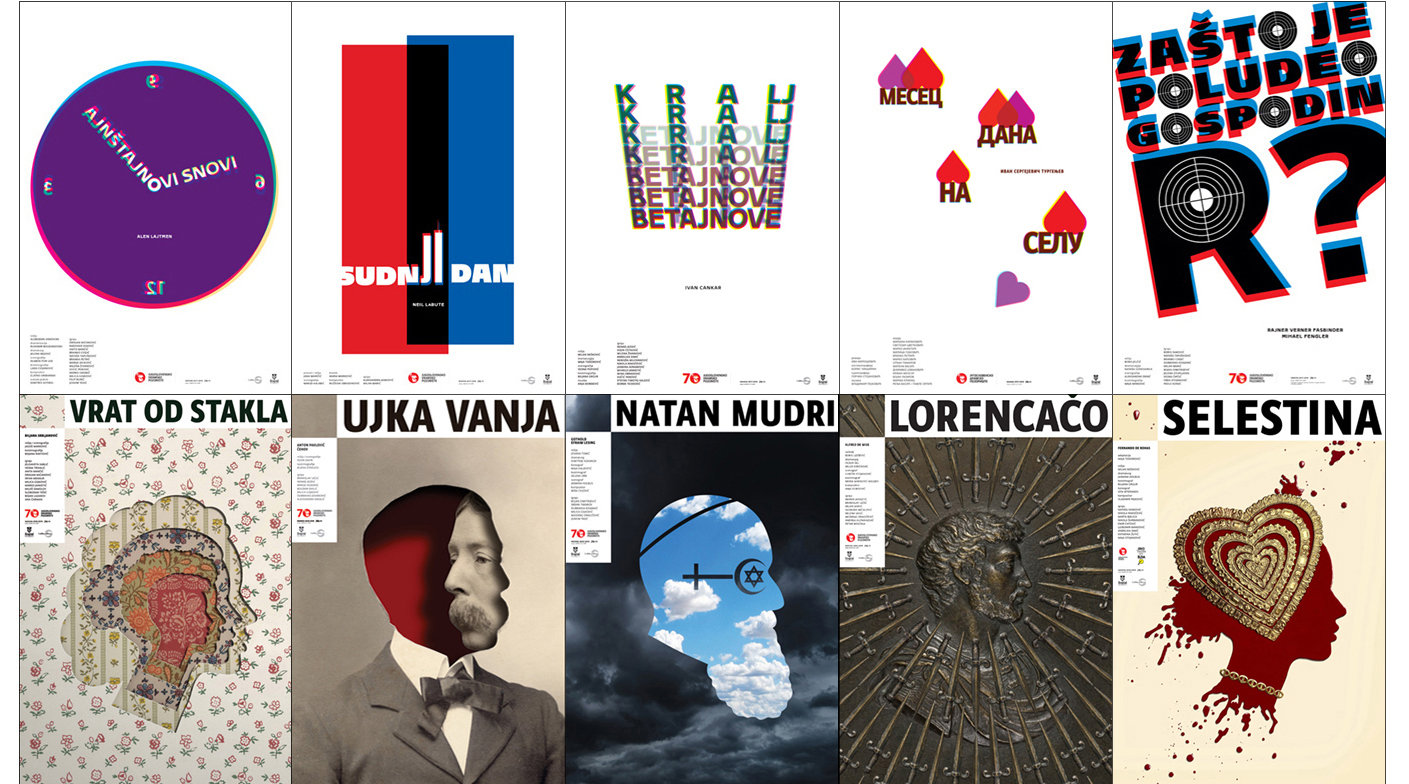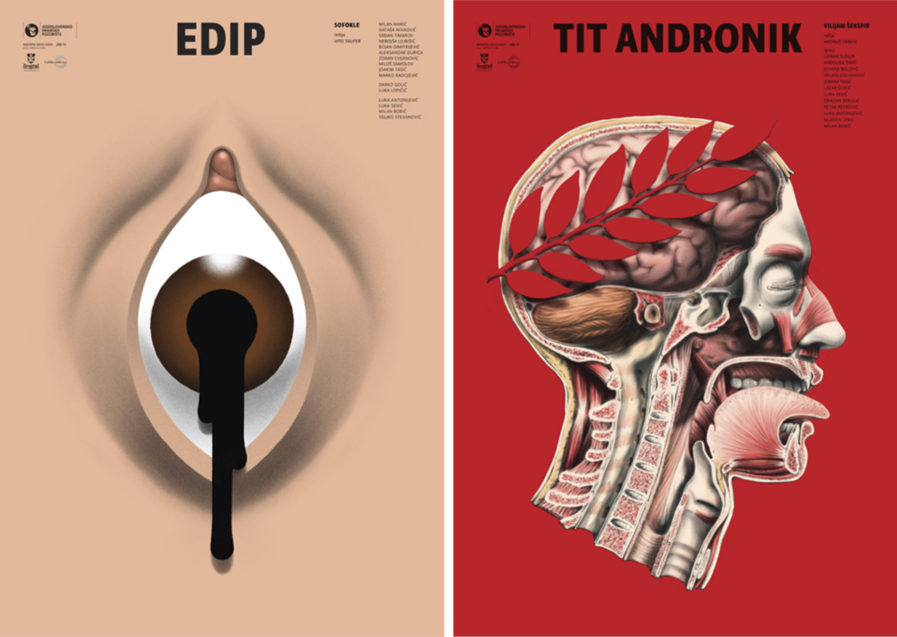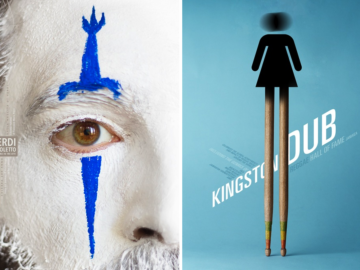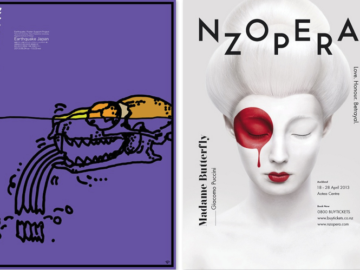If you’re a fan of theatre and poster art, you will want to check these recent Poster 2024 entries from Mirko Ilic Corp. The US-based studio has been creating posters for the JDP-Yugoslav Drama Theatre in Belgrade, Serbia, for the last six seasons, with each season featuring a unique style of design. The plays featured this season are Oedipus, a Greek tragedy by Sophocles, and Titus Andronicus, by far William Shakespeare’s bloodiest tale.
By: Mirko Ilic
“This is my sixth season of creating posters for the JDP-Yugoslav Drama Theatre in Belgrade, Serbia. For each season, I use different styles when designing the posters. Only the font, “TyponineSans”, stays the same. I use this font not only because it’s simple, legible, elegant, and doesn’t draw attention away from the main image, but also because it has both Cyrillic and Latin alphabets, both of which are used in Serbia.
“I decide on each season’s look before I know which plays are in that season. That way, my design process is more interesting and complicated. For season six, I decided to have black type on the top of the poster and a one-color background with a small illustration in the middle. I wanted the images to look “old-fashioned” despite my drawing them on an iPad. Here are some insights into the plays and inspiration for the poster art.”
Oedipus Rex by Sophocles, A Greek Tragedy
“The Oracle of Delphi tells King Laius of Thebes that he’ll have a child who’s destined to kill him and sleep with his own mother and Laius’s wife, Jocasta. When a baby comes along, the king pierces his ankles and leaves him on a mountainside to die. A shepherd finds the baby, though, and takes him to King Polybus and Queen Merope of Corinth, who name him Oedipus and raise him as their own.
“One day, Oedipus goes to the Oracle of Delphi to find out who his real parents are. The Oracle doesn’t tell him this, but she does tell him that he’s destined to kill his father and sleep with his mother. Oedipus tries to run from this fate but ends up running right into it when he kills Laius in a scuffle at a crossroads, not knowing he’s his real dad. Later, he wins the throne of Thebes and unknowingly marries Jocasta after answering the riddle of the Sphinx.
“Several years (and several children) later, Oedipus and Jocasta figure out the truth with the unwilling help of the seer Tiresias. Jocasta hangs herself, and Oedipus stabs out his own eyes. The blind king then goes into exile with only his daughter, Antigone, to guide him and eventually dies in the town of Colonus.
“In 1899, psychoanalyst Sigmund Freud chose the term Oedipus complex to designate a son’s feeling of love toward his mother and jealousy and hate toward his father. To Freud, this was a crucial stage in the normal developmental process. However, those were not the emotions that motivated Oedipus’s actions or determined his character in any ancient version of the story.
“For the poster, I was trying to simplify the essential elements of the play and create one symbol for all the parts. Oedipus unknowingly kills his father and has sex with his mother. After finding that out, he blinds himself with spikes. To me, this image covers all the elements and simultaneously contains the disturbing weirdness of the play.”
Titus Andronicus by William Shakespeare
“Titus Andronicus is the most brutal and bloodiest play believed to have been written by William Shakespeare. That was his attempt at writing a “revenge tragedy,” which was extremely popular at the time. The play was initially very popular, but by the 17th century, it had fallen out of favor. The Victorian era disapproved of it primarily because of its graphic violence. Its reputation improved around the middle of the 20th century, but it is still one of Shakespeare’s least respected plays.
“In the play, four of Titus’s children die, ten named characters die, six Romans are killed, four Goths are killed, and there is one human sacrifice, one character buried alive, seven limbs lopped off, and two characters baked in the pie. With this body count, the play reminded me of a butcher shop or an anatomy class. That’s why I decided to use an old anatomy book as a reference and redrew different illustrations of the book into one image. I drew a sliced and chopped-off head, adding a laurel wreath in the color of blood, the same color as the poster’s background. I made it the color of blood because, despite the laurel wreath symbolizing victory, nobody wins in this play.”

See more of Mirko Ilic’s work at Behance.
To discover other Poster 2024 entries, or to submit your own work, click here.
To see more of Graphis Master Mirko Ilic’s work, click here.





